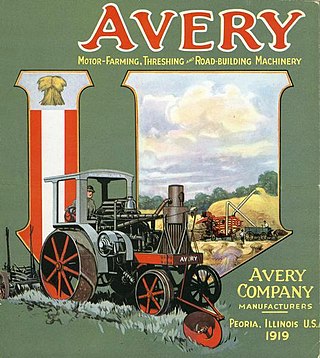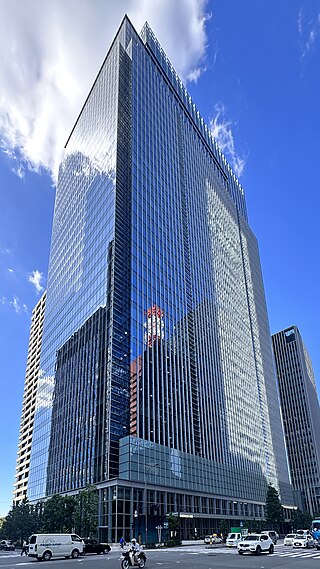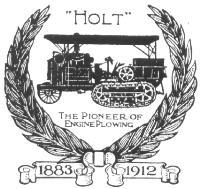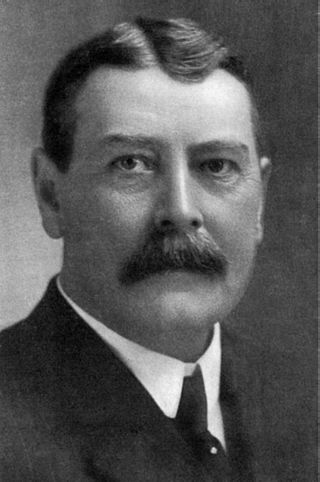Related Research Articles

Continuous track or tracked treads are a system of vehicle propulsion used in tracked vehicles, running on a continuous band of treads or track plates driven by two or more wheels. The large surface area of the tracks distributes the weight of the vehicle better than steel or rubber tyres on an equivalent vehicle, enabling continuous tracked vehicles to traverse soft ground with less likelihood of becoming stuck due to sinking.

Heavy equipment, heavy machinery, earthmovers, construction vehicles, or construction equipment, refers to heavy-duty vehicles specially designed to execute construction tasks, most frequently involving earthwork operations or other large construction tasks. Heavy equipment usually comprises five equipment systems: the implement, traction, structure, power train, and control/information.

Caterpillar Inc., also known simply as CAT, is an American construction, mining and other engineering equipment manufacturer. The company is the world's largest manufacturer of construction equipment. In 2018, Caterpillar was ranked number 73 on the Fortune 500 list and number 265 on the Global Fortune 500 list. Caterpillar stock is a component of the Dow Jones Industrial Average.

Bharat Heavy Electricals Limited (BHEL) is an Indian central public sector undertaking and the largest government-owned power generation equipment manufacturer. It is owned by the Government of India, with administrative control by the Ministry of Heavy Industries. Established in 1956 with the help of Soviet technology, BHEL is based in New Delhi.

Benjamin Leroy Holt was an American businessman and inventor who patented and manufactured the first practical crawler-type tread tractor. The continuous-type track is used for heavy agricultural and engineering vehicles to spread the weight over a large area to prevent the vehicle from sinking into soft ground. He founded with his brothers the Holt Manufacturing Company.

Murata Manufacturing Co., Ltd. is a Japanese manufacturer of electronic components, based in Nagaokakyo, Kyoto. It produces ceramic passive electronic components, primarily capacitors, and has a majority marketshare worldwide in ceramic filters, high-frequency parts, and sensors. As of March 31, 2013 Murata Manufacturing has 24 subsidiaries in Japan and 52 overseas in the United States, Canada, Mexico, Brazil, Germany, France, Italy, the United Kingdom, Switzerland, the Netherlands, Spain, Hungary, Finland, China, Taiwan, South Korea, Singapore, Malaysia, the Philippines, Thailand, Hong Kong, Vietnam and India.

Richard Hornsby & Sons was an engine and machinery manufacturer in Grantham, Lincolnshire, England from 1828 until 1918. The company was a pioneer in the manufacture of the oil engine developed by Herbert Akroyd Stuart, which was marketed under the Hornsby-Akroyd name. The company developed an early track system for vehicles, selling the patent to Holt & Co. in America. In 1918, Richard Hornsby & Sons became a subsidiary of the neighbouring engineering firm Rustons of Lincoln, to create Ruston & Hornsby.

Avco Corporation is a subsidiary of Textron, which operates Textron Systems Corporation and Lycoming.

The Avery Company, founded by Robert Hanneman Avery, was an American farm tractor manufacturer famed for its undermounted engine which resembled a railroad engine more than a conventional farm steam engine. Avery founded the farm implement business after the Civil War. His company built a large line of products, including steam engines, beginning in 1891. The company started with a return flue design and later adapted the undermount style, including a bulldog design on the smokebox door. Their design was well received by farmers in central Illinois. They expanded their market nationwide and overseas until the 1920s, when they failed to innovate and the company faltered. They manufactured trucks for a period of time, and then automobiles. until they finally succumbed to an agricultural crisis and the Depression.

A rice huller or rice husker is an agricultural machine used to automate the process of removing the chaff of grains of rice. Throughout history, there have been numerous techniques to hull rice. Traditionally, it would be pounded using some form of mortar and pestle. An early simple machine to do this is a rice pounder. Later even more efficient machinery was developed to hull and polish rice. These machines are most widely developed and used throughout Asia where the most popular type is the Engelberg huller designed by German Brazilian engineer Evaristo Conrado Engelberg in Brazil and first patented in 1885.

Mitsui & Co., Ltd. is one of the largest sogo shosha in Japan; it is part of the Mitsui Group.
The Bundy Manufacturing Company was a 19th-century American manufacturer of timekeeping devices that went through a series of mergers, eventually becoming part of International Business Machines and Simplex Time Recorder Company. It was the first time-recording company in the world to produce time clocks, colloquially known as 'Bundys'. The company was founded by the Bundy Brothers.

The Holt Manufacturing Company began with the 1883 founding of Stockton Wheel Service in Stockton, California, United States. Benjamin Holt, later credited with patenting the first workable crawler ("caterpillar") tractor design, incorporated the Holt Manufacturing Company in 1892. Holt Manufacturing Company was the first company to successfully manufacture a continuous track tractor By the early 20th century, Holt Manufacturing Company was the leading manufacturer of combine harvesters in the US, and the leading California-based manufacturer of steam traction engines.

Joy Global Inc. was a company that manufactured and serviced heavy equipment used in the extraction and haulage of coal and minerals in both underground and surface mining. The company had manufacturing facilities in Alabama, Pennsylvania, Texas, Wisconsin, Australia, Canada, China, France, South Africa, Poland and the United Kingdom. In 2017, Joy Global was acquired by Komatsu Limited and was renamed Komatsu Mining Corp.
Priestman Brothers was an engineering company based in Kingston upon Hull, England that manufactured diggers, dredgers, cranes and other industrial machinery. In the later 1800s the company also produced the Priestman Oil Engine, an early design of oil fuelled internal combustion engine.
LiuGong, officially Guangxi LiuGong Machinery Co., Ltd., is a Chinese multinational construction machinery manufacturing company headquartered in Liuzhou, China. It is the world's 10th-largest construction equipment manufacturer by market share and the world's largest manufacturer of wheel loaders.

Evaristo Conrado Engelberg was a Brazilian mechanical engineer and inventor. He is the inventor of the Engelberg huller, a machine used to strip the husks from rice and coffee during harvest. He was born to German immigrants in Piracicaba, São Paulo.

The Louden Machinery Company was an American engineering, manufacturing and design company based in Fairfield, Iowa. Founded by William Louden, the company in its early years manufactured and sold the patented hay carrier that he invented in 1867. The company later expanded into a wide variety of farm equipment and, in 1906, began an Architecture Department that reportedly designed more than 25,000 barns from 1906 to 1939. During World War I, Louden's monorail equipment carrier began to be applied to industrial and military applications. By the 1920s, much of the company's revenues were derived from industrial applications of its monorail equipment carriers.

Events in the year 1932 in Brazil.

Packaging machinery is used throughout all packaging operations, involving primary packages to distribution packs. This includes many packaging processes: fabrication, cleaning, filling, sealing, combining, labeling, overwrapping, palletizing.
References
- ↑ "Engelberg, Inc". Vintage Machinery, 2011. Retrieved July 17, 2011.
- ↑ "Inventions Built Industries Here". Syracuse Journal . Syracuse, New York. March 20, 1939.
- ↑ "Christmas Tree Party". The Post-Standard . Syracuse, New York. December 24, 1910.
- ↑ "Rua Evaristo Conrado Enbelberg". História das Ruas de São Paulo, 1991. Retrieved July 17, 2011.[ permanent dead link ]
- ↑ Peter R. Lawrence; K. Lawrence; J. T. Dijkmann; P. H. Starkey (January 1993). Research for development of animal traction in West Africa. Nigeria: West Animal Traction Network, July 1990. ISBN 9789290532767 . Retrieved July 17, 2011.